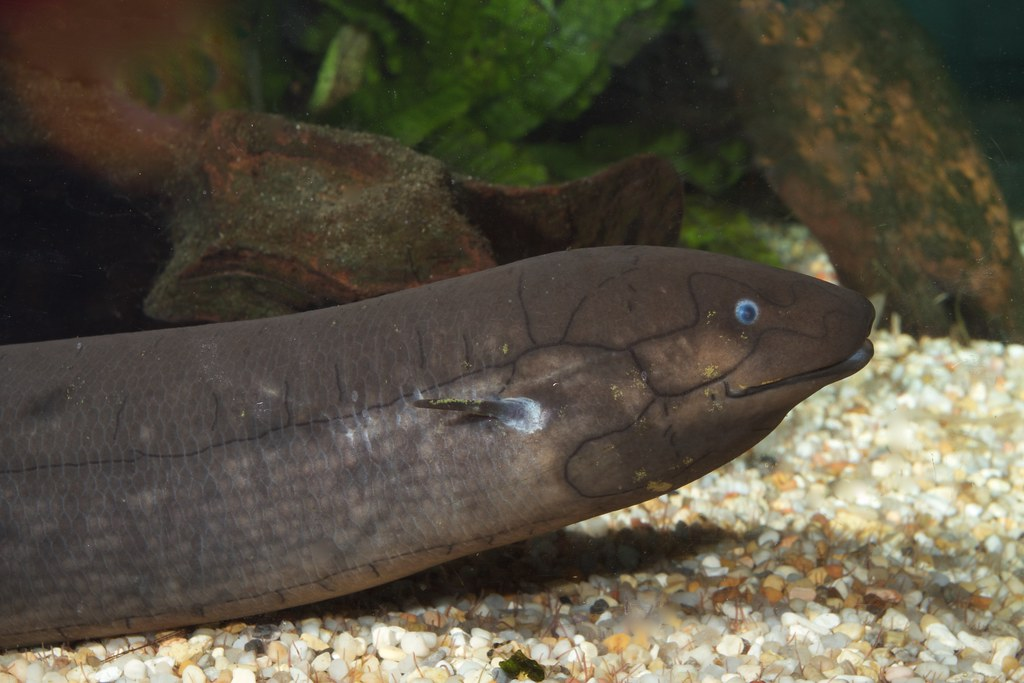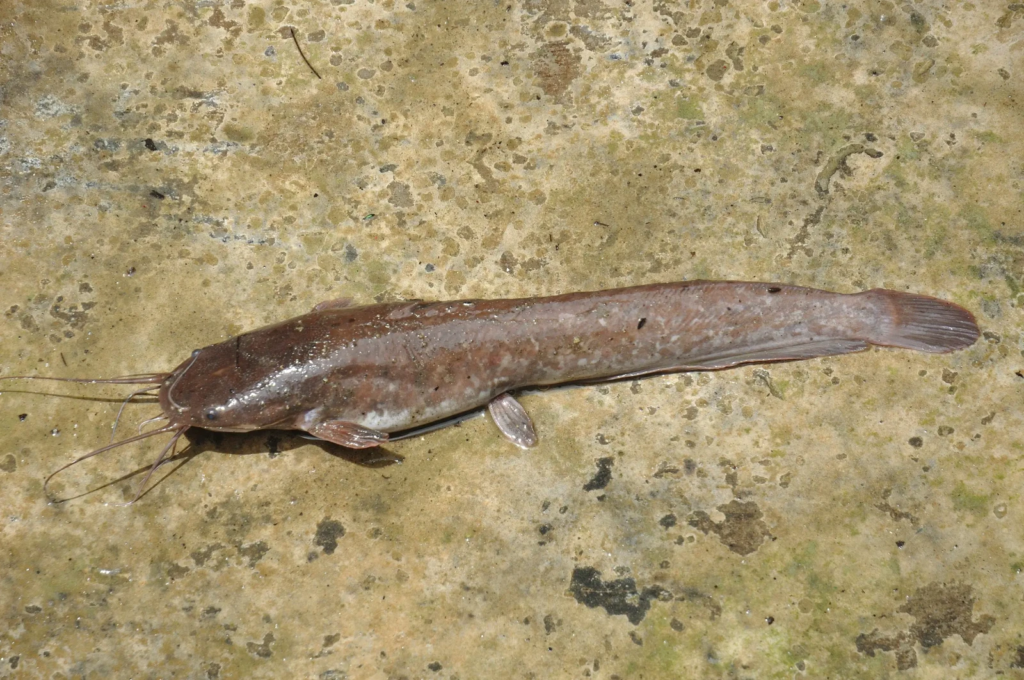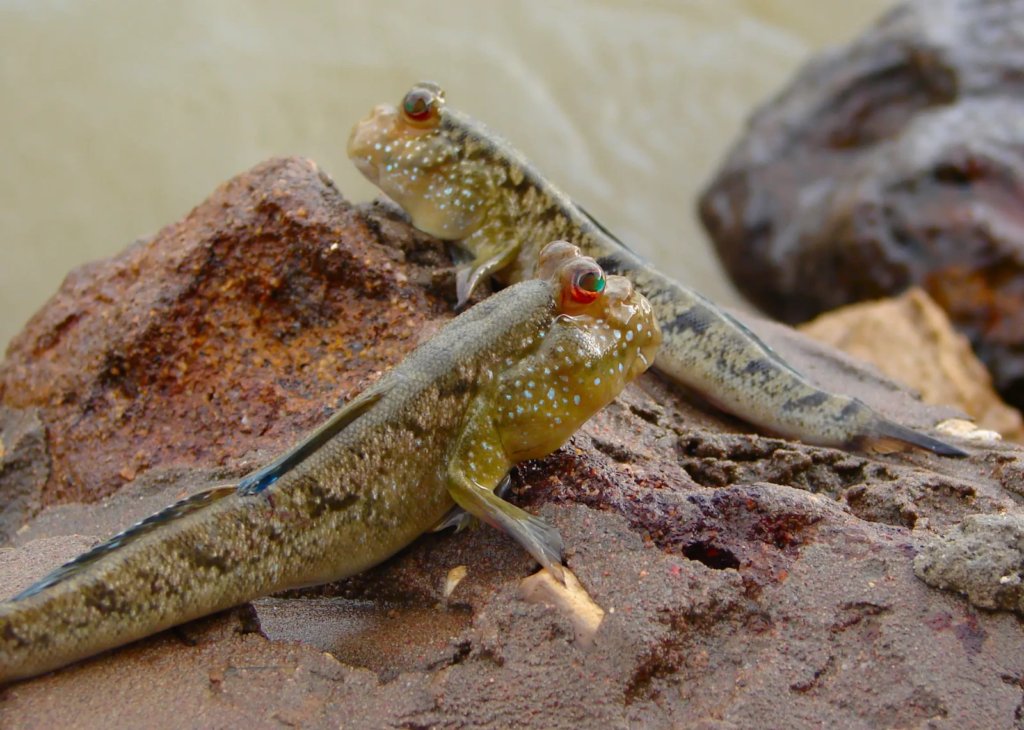1. The Northern Stargazer: Earth-Bound and Electric

YouTube
Known for its unusual appearance, the northern stargazer is a fish that seems to live in two worlds. While it doesn’t “walk” in the way mudskippers or climbing perch do, it uses its uniquely designed body to move across the seafloor in a manner that almost seems like it’s traversing land. Its eyes are located on top of its head, allowing it to gaze at the stars – hence the name – while buried in the sand, waiting to ambush prey. Some species of stargazers have been known to use electrical discharges to defend themselves, adding a layer of mystery to this already fascinating creature. It may not roam the land, but its underwater “walks” make it a fish worthy of admiration.
2. Climbing Perch: A Master of the Great Escape

YouTube
The climbing perch, native to South and Southeast Asia, has perfected the art of land exploration. With a unique ability to move across land, it can “walk” on its pectoral fins and gill covers. This fish has adapted to survive in oxygen-poor environments like stagnant ponds and rice fields, where it often needs to leave the water to find a new home. Its strong, sharp spines help it crawl up muddy banks and even climb trees in search of a new body of water. It’s not just a fish; it’s a little survivalist that thrives in situations where other creatures might struggle. Watching it move, it’s hard not to be impressed by its persistence.
3. Lungfish: The Ancient Explorer

Flickr
Lungfish are like time travelers from a distant past. These ancient fish have evolved both gills and lungs, allowing them to survive in drought-prone areas. When water levels drop, lungfish enter a state of dormancy, burrowing into the mud and forming a cocoon-like structure around themselves. However, when they’re active, they’re able to move on land, dragging themselves along with their pectoral fins. Their ability to walk across land has earned them the title of “living fossils.” These incredible fish are the closest link to the ancestors of the first land vertebrates, making their land excursions not only impressive but historically significant.
4. Walking Catfish: The Bold Traveler

Animalia
The walking catfish, or Clarias batrachus, is known for its boldness and ability to travel overland in search of new bodies of water. This fish is not just capable of walking; it actively seeks out new habitats by using its pectoral fins to “walk” across wet, muddy surfaces. Found primarily in Southeast Asia, walking catfish have adapted to living in areas with seasonal flooding. When the floodwaters recede, they can move to another pond or swamp, sometimes covering vast distances. With their long, whisker-like barbels and determined nature, these catfish are the explorers of the fish world, always on the lookout for their next great adventure.
5. Pacific Spiny Lumpsucker: The Unexpected Traveler

Flickr
While the Pacific spiny lumpsucker may not “walk” in the traditional sense, it certainly moves in a manner that defies typical fish behavior. Using its spiny, suction-cup-like pelvic fins, this small but mighty fish can crawl along the sea floor or cling to rocks and other surfaces. Though it spends most of its time in the water, the lumpsucker’s ability to cling to rocks for long periods – almost as if walking from place to place in the ocean – makes it an interesting land-adjacent traveler. This little creature is built for enduring harsh conditions, both in the water and on the shorelines, adapting its movements for survival.
6. Mudskipper: The Ultimate Land-Lover

Animalia
Mudskippers are the true adventurers of the fish world. With their strong, muscular pectoral fins, they can walk on land with ease. These little warriors don’t just walk – they leap, climb, and even “skip” across mudflats in search of food, making them look like tiny fish versions of frogs. Found in mangrove swamps and coastal areas, mudskippers spend a surprising amount of time out of the water, gulping air and hunting for insects or small crustaceans. They use their dorsal fins like tiny paddles when they do return to the water, showcasing their versatility. Mudskippers have a rich, almost whimsical personality, thriving both on land and in the water, defying what most people think fish should do!


